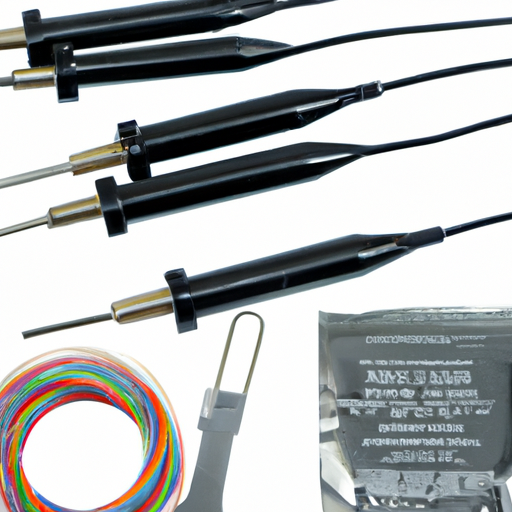
Soldering is a crucial process in electronics manufacturing, as it is used to join electronic components to printed circuit boards (PCBs) and create electrical connections. Mainstream solder is a popular choice for this process, as it offers a reliable and cost-effective solution for a wide range of applications. In this article, we will explore the parameters that define mainstream solder product lines and how they can impact the soldering process.

Lead-based solders have been widely used in the past due to their low melting point and excellent wetting properties. However, due to environmental concerns, lead-free solders have become more popular in recent years. These solders typically contain a combination of tin, silver, and copper, and offer comparable performance to lead-based solders.
2. Melting Point: The melting point of solder is another important parameter to consider when selecting a mainstream solder product line. The melting point of the solder should be compatible with the components being soldered, as well as the temperature profile of the soldering process. Solder with a low melting point can be more easily damaged by heat, while solder with a high melting point may require higher temperatures for proper soldering.
3. Flux Type: Flux is a chemical agent that is used to clean and prepare the surfaces to be soldered, as well as to facilitate the flow of solder. There are different types of fluxes available, including rosin-based, water-soluble, and no-clean fluxes. The type of flux used can impact the soldering process, including the cleanliness of the solder joint and the ease of soldering.
4. Form Factor: Mainstream solder product lines are available in a variety of forms, including solder wire, solder paste, and solder preforms. The form factor of the solder can impact the ease of use and the quality of the solder joint. Solder wire is commonly used for hand soldering, while solder paste is often used for reflow soldering processes. Solder preforms are used for selective soldering applications, where precise amounts of solder are required.
5. Reliability: Reliability is a key parameter to consider when selecting a mainstream solder product line. The solder joint must be able to withstand the mechanical and thermal stresses of the application, as well as provide a long-lasting electrical connection. Mainstream solder product lines are typically tested for reliability, including factors such as thermal cycling, vibration, and humidity resistance.
In conclusion, mainstream solder product lines offer a reliable and cost-effective solution for a wide range of soldering applications. By considering parameters such as alloy composition, melting point, flux type, form factor, and reliability, manufacturers can select the best solder for their specific needs. Whether soldering components by hand or using automated processes, mainstream solder product lines provide the performance and consistency required for successful soldering operations.
Soldering is a crucial process in electronics manufacturing, as it is used to join electronic components to printed circuit boards (PCBs) and create electrical connections. Mainstream solder is a popular choice for this process, as it offers a reliable and cost-effective solution for a wide range of applications. In this article, we will explore the parameters that define mainstream solder product lines and how they can impact the soldering process.

Lead-based solders have been widely used in the past due to their low melting point and excellent wetting properties. However, due to environmental concerns, lead-free solders have become more popular in recent years. These solders typically contain a combination of tin, silver, and copper, and offer comparable performance to lead-based solders.
2. Melting Point: The melting point of solder is another important parameter to consider when selecting a mainstream solder product line. The melting point of the solder should be compatible with the components being soldered, as well as the temperature profile of the soldering process. Solder with a low melting point can be more easily damaged by heat, while solder with a high melting point may require higher temperatures for proper soldering.
3. Flux Type: Flux is a chemical agent that is used to clean and prepare the surfaces to be soldered, as well as to facilitate the flow of solder. There are different types of fluxes available, including rosin-based, water-soluble, and no-clean fluxes. The type of flux used can impact the soldering process, including the cleanliness of the solder joint and the ease of soldering.
4. Form Factor: Mainstream solder product lines are available in a variety of forms, including solder wire, solder paste, and solder preforms. The form factor of the solder can impact the ease of use and the quality of the solder joint. Solder wire is commonly used for hand soldering, while solder paste is often used for reflow soldering processes. Solder preforms are used for selective soldering applications, where precise amounts of solder are required.
5. Reliability: Reliability is a key parameter to consider when selecting a mainstream solder product line. The solder joint must be able to withstand the mechanical and thermal stresses of the application, as well as provide a long-lasting electrical connection. Mainstream solder product lines are typically tested for reliability, including factors such as thermal cycling, vibration, and humidity resistance.
In conclusion, mainstream solder product lines offer a reliable and cost-effective solution for a wide range of soldering applications. By considering parameters such as alloy composition, melting point, flux type, form factor, and reliability, manufacturers can select the best solder for their specific needs. Whether soldering components by hand or using automated processes, mainstream solder product lines provide the performance and consistency required for successful soldering operations.